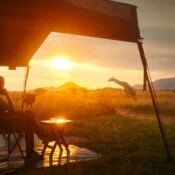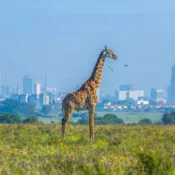
Best Time to Visit Kenya: A Month-by-Month Guide
Planning a trip to Kenya can feel a bit like packing for four seasons in one suitcase — the country’s climate changes depending on where you go and when. The good news? Kenya is beautiful year-round. The better news? Knowing what happens each month helps you match your visit to exactly the experience you want — whether it’s spotting the Big Five, watching baby elephants, hiking in the mountains, or sipping a coconut on the beach.
Here’s a month-by-month breakdown so you can pick your perfect time to visit.
January – Warm, Sunny, and Perfect for Safari
January falls in the middle of Kenya’s dry season. Days are warm and skies are clear, making it ideal for wildlife viewing in parks like Amboseli, Maasai Mara, and Tsavo. Animals gather near water sources, so spotting them is easier.
On the coast, places like Diani Beach and Watamu are sunny and breezy — perfect for swimming or diving.
February – Hot Days and Prime Wildlife Viewing
February is similar to January but slightly hotter, especially inland. If you love photography, the golden light and dusty landscapes make for stunning safari shots. Migratory birds are also still around, so bird lovers are in for a treat.
Romantics might also enjoy February for a Valentine’s getaway — think sunset game drives and private dinners under the stars.
March – The Calm Before the Rains
Early March can still be great for travel, but by mid-month, the “long rains” start to build in some areas. Safaris are still possible, though trails might be muddier. The upside? Fewer crowds and greener scenery. The coast is hot and humid, but the ocean is warm for snorkeling.
April – Lush Landscapes and Low Season Deals
April is deep into the rainy season. Some lodges in remote parks close temporarily, but for those that stay open, prices drop significantly. Landscapes turn vibrant green, and while game viewing is a bit harder, it’s peaceful with almost no tourist crowds.
May – Green Season Charm
May is still rainy, but the showers are starting to ease by the end of the month. This is one of the most beautiful times for photographers — dramatic skies, fresh grass, and plenty of newborn animals. If you don’t mind some rain, this is a budget-friendly month to visit.
June – Dry Season Begins
By June, the rains have mostly cleared, leaving fresh landscapes and comfortable temperatures. Safari conditions improve again, and in the Maasai Mara, the anticipation builds for the wildebeest migration.
On the coast, the winds pick up, making it a great month for kitesurfing in places like Diani.
July – Migration Season Kicks Off
July marks the start of one of nature’s greatest shows: the Great Wildebeest Migration in the Maasai Mara. Thousands of wildebeest and zebras start crossing from Tanzania into Kenya, attracting predators and thrilling safari-goers.
Weather is cool and dry, so bring a light jacket for early morning drives.
August – Peak Migration & Safari Bliss
August is prime time for the migration, with dramatic river crossings in the Maasai Mara. Expect incredible sightings — and higher prices, as this is high season. Book well in advance.
It’s also a good time for climbing Mount Kenya thanks to the dry, clear conditions.
September – Warm Days, Fewer Crowds
The migration is still in full swing, but the crowds start to thin slightly compared to August. The weather is dry and sunny — one of the best months overall for both safari and beach.
October – Migration Winds Down
By October, the wildebeest begin heading back south. Parks are quieter, and the weather remains warm and dry. This is a lovely month for a mix of safari and beach before the short rains begin.
November – Short Rains Arrive
November brings short, scattered rains — usually in the afternoons. These showers freshen up the scenery without completely disrupting travel. Wildlife viewing is still good, and you can enjoy lower prices compared to peak season.
December – Festive and Lively
December is a fantastic time if you want to combine safari with festive celebrations. Early December is warm and relatively dry; later in the month can bring a few showers, but nothing that stops the holiday spirit. The coast is buzzing, and lodges fill up quickly for Christmas and New Year.
Quick Tips
- For Safaris: July–September is unbeatable for the migration; January–February is great for clear skies and easy wildlife spotting.
- For Beaches: December–March and June–October are best for sun and calm seas.
- For Budget Travel: April–May and November offer lower prices and fewer tourists.
Final Word:
There’s truly no “bad” time to visit Kenya — it’s just about matching the month to your travel goals. Whether you’re here for lions, beaches, culture, or a bit of everything, Kenya has a season for you.
If you’re ready to start planning your perfect trip, book with Holidawn Adventures Tours & Travel and let us take care of all the details — from park fees and guides to cozy lodges and beach escapes.
📧 Email: info@holidawnadventures.com
📞 Phone/WhatsApp: +254 112545853
🌐 Website: www.holidawnadventures.com
Your Kenyan adventure is just a message away. Karibu Kenya!
All Categories
Recent Posts
Kenya Family Safari Guide: Costs, Tips & Best Experiences
Top 10 Luxury Safari Lodges in Kenya
Best National Parks in Kenya for Safaris
Quick booking process
+254112545853
+254722910255


